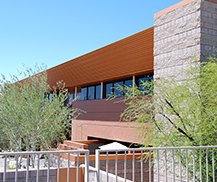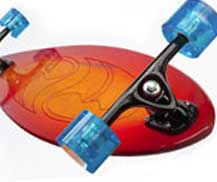Everything You Need to Know About Slip Resistant Performance Floor Coatings

If you want to reduce and prevent slips and falls, you need to consider the benefits of a slip-resistant floor coating. It offers a lot of safety benefits against common, easily-preventable slips and falls.
What is Slip Resistance Performance Coating?
This type of anti-slip coating gets applied to the direct surface of the flooring. The additive in the coating is post-consumable crushed glass and it creates the slip resistance effect. When added to the floor, it becomes an ADA safety floor.
The additive looks like white sand but when you add it to the coating it looks clear. This allows for your floors to maintain its aesthetics. This advancement is much better compared to the silica sand which affects the color of the floor.
What Surfaces Work with a Slip-resistant Coating?
These coatings often work well with vinyl composition tiles (VCT), as well as the following:
- Polished stone
- Ceramic tile
- Polished concrete
- Metal Decking
No matter what surface you apply it to, it prevents falling and slipping. This is regardless of whether the surface is wet or dry. Opting for this product is one of the most effective ways of achieving long-lasting surface resistance effects.
It’s perfect when using it in high-traffic areas. After all, it’s part of the floor’s surface, making it withstand the testament of time. Even with repeated use, it will take a long while before it starts showing signs of wear and tear.
How to Rate the Floor’s Slip Resistance
When there’s not enough friction between the floor and your foot, slips occur. That’s why the amount of direct contact is an important factor. When measuring the floor’s slipperiness, you find the slip resistance or the friction coefficient. A coefficient of friction is a value that shows the relationship between the force of friction between two objects and the normal reaction between the objects that are involved. The coefficient of friction is broken into two parts. The Static COF which is the friction that occurs when one steps down onto a surface. The Dynamic COF is the friction created as someone is in motion.
Both the Static Coefficient of Friction and the Dynamic Coefficient of Friction were found to be critical to assessing the slip resistance of a surface. b) Since approximately 80% of all slip and fall claims occur on wet floors, it is reasonable that Static and Dynamic COF should be measured in a wet environment.
The scale’s range is from zero to one. The zero represents the lowest level of slip resistance, increasing by 0.1 until it gets to one. The accepted recommended value of slip resistance for a wet surface is at 0.42.
How to Test the Slip Resistance
There are a lot of machines out there that can help measure slip resistance. The most common among them is the tribometer. It works by rubbing a pad of common materials used in shoe soles over the floor while testing the ease of the pad’s passing over it.
The problem with the tests is that some standards need the floor to be wet. What this means is that the dampness introduced to the floor surface decreases or even eliminates the contact. When losing the contact, it means that there’s little to no friction occurring.
The entire situation makes it more likely to result in slips and falls. As such, most standards prefer tests on wet floors because it has more significance. After all, around 80% of all slip and fall accidents occur because of wet floors, with this type of accident accounting for 30% of all reported injuries.
Slip-resistant Coating Maintenance
After applying the slip-resistant coating, cleaning and other maintenance for your staff is simple. The maintenance team can clean it off like they would any other hard floor. The top coat doesn’t hold dirt, making it easier to clean. Dirt, grease and oils that make floor dirty won’t penetrate the coating and the underlying surface. Precision SlipShield® can be cleaned and maintained with water and mild non-abrasive detergent cleaning. To optimize and maintain its slip-resistant properties SlipShield® should NOT be waxed, abraded, polished or burnished.
When to Apply Floor Treatments
You need to use slip-resistant paint on areas with ample foot traffic. In a typical scenario, floor treatments get applied when the hard surfaces become slippery when wet. Such as; interior and exterior ceramic tile, polished stone, polished concrete, coated flooring and metal decking to attain acceptable slip resistance in both dry and wet environments.
Surfaces that are not recommended for slip-resistant floor treatments include:
- Wood
- Rubber
Provide a Safer Environment for your Patrons and Staff
Follow safety guidelines and ensure ADA safety flooring by applying SlipShield slip-resistant floor coating. Getting the right floor coating and floor paint can help prevent slips and falls in the workplace or at home.
Do you need more information? Contact us today, we’re happy to help!








